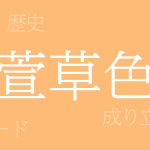Color is a mirror reflecting culture, and Japan’s traditional colors, known for their unique beauty, have garnered attention worldwide. Among these, “Yamabuki Color (やまぶきいろ – Yamabuki-iro)” embodies the vivid colors of nature and is deeply rooted in Japanese tradition and art. This article explores the allure of Yamabuki Color, delving into its significance, history, and applications in modern design.
About Yamabuki Color (やまぶきいろ – Yamabuki-iro)
Yamabuki Color (やまぶきいろ – Yamabuki-iro), named after the Yamabuki (ヤマブキ) flowers, is characterized by a vibrant yellow hue. It has been used since ancient times in clothing and crafts as one of the traditional colors representing Japan’s changing seasons. This color is bright and warm, bringing vitality and richness to those who see it.
The History of Yamabuki Color
Yamabuki Color has been used since the Heian period, seen in the garments of nobility and in architecture. It is also celebrated in classical literature as “the flower of Yamabuki,” playing an important role in depicting the emotions and scenery of the Japanese people. Over time, this color has continued to be used in various cultural expressions such as Japanese paintings and textiles.
Yamabuki Color Codes
To reproduce Yamabuki Color in digital and web design, accurate color codes are essential. Below are the color codes for Yamabuki Color:
- HEX: #FCAF17
- RGB: R:252 G:175 B:23
- CMYK: C:0.0 M:30.6 Y:90.9 K:1.2
The Western Name for Yamabuki Color
In English, Yamabuki Color is sometimes referred to as “Yamabuki color,” but depending on the shade, it may also be called “Golden Yellow” or “Mustard Yellow.” These names are useful for sharing the image of the color from an international perspective.
Conclusion on Yamabuki Color
Yamabuki Color, with its historical background and beautiful hue, is one of the iconic colors of Japanese culture. It is still loved today across various fields such as fashion, interior design, and graphic design. Incorporating this color can bring warmth and brightness to artworks and products, enhancing their visual appeal.

























